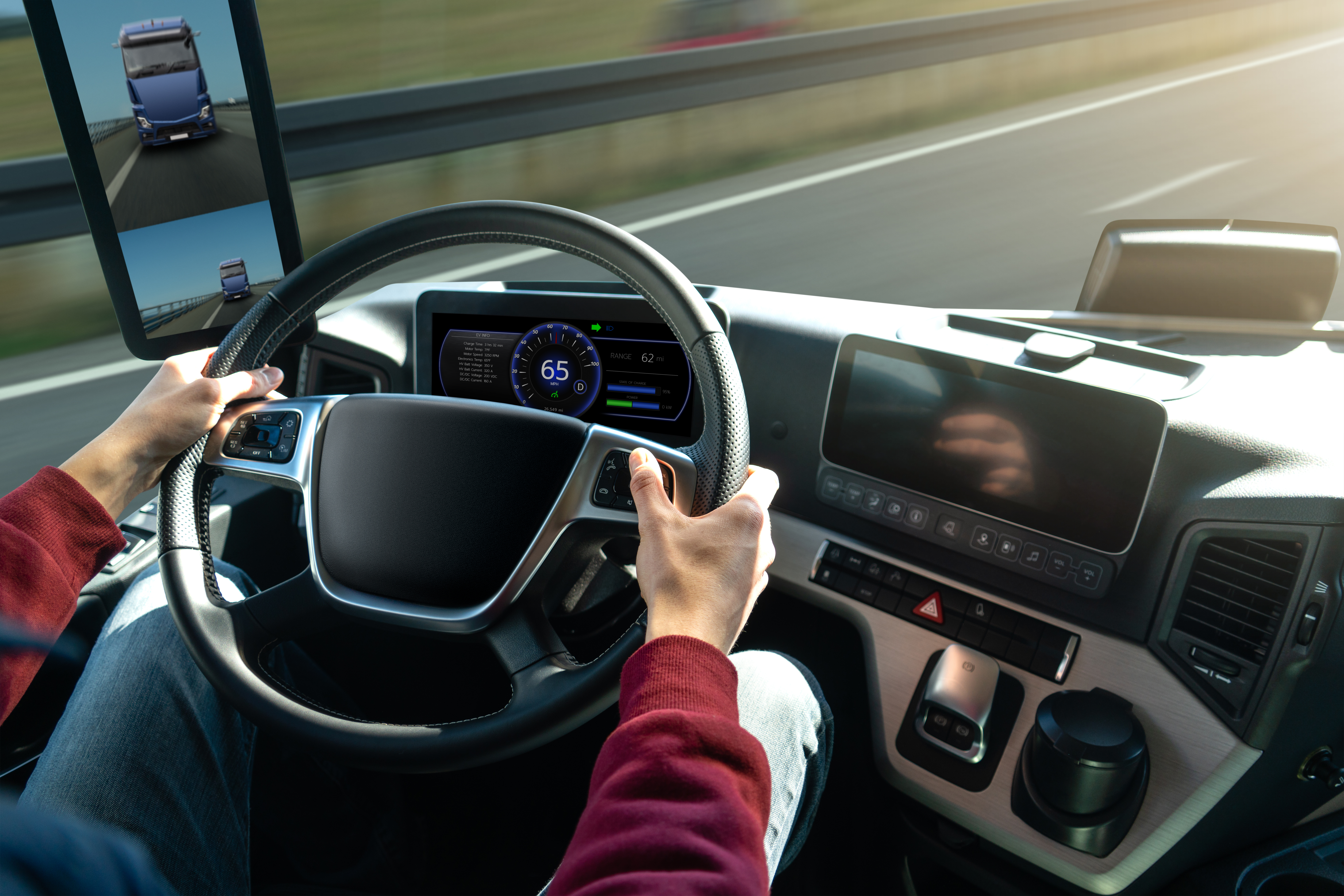Digital Instrument Cluster
Vehicle instrument clusters have made huge technological advances since traditional gauges. Transitioning beyond simple displays of essential information like speedometer, tachometer, and fuel gauge, the modern digital instrument cluster provides a wide range of information within a more compact design. Digital clusters also allow for customization, providing users with specialized dashboards that meet individual requirements. This versatile instrument cluster can be used in an array of applications, adapting to the need of the customer and the specifications of diverse vehicles.
Where It All Started
Valid initiated the development of instrument clusters when the need became apparent within their luxury and specialty vehicle clientele. Using the specialized GUI (graphic user interface) software developed by Crank Software, Valid has been able to put the idea of high-quality customizable instrument clusters into motion. With a focus on ease of use, intuitive interface, and clear infographics, Valid is able to provide its customers with a digital dashboard that is visually appealing and customizable to the specific needs of each vehicle.
Tradition Gauges Go Digital
Traditional dashboards comprise of standard gauges such as speedometer, tachometer, fuel gauge, temperature gauge, and oil pressure gauge. Although the traditional gauges are functional, they lack the flexibility and innovation expected in today’s modern dashboards. Valid’s instrument cluster elevates the traditional car dashboard. It offers customers the ability to monitor vehicle performance and conditions such as transmission, brake system, air system, suspension and leveling, fuel and trip information, on-board diagnostics, battery voltage, and more – all while maintaining efficiency and visual appeal. The digital dashboard enhances the overall driver experience, delivering a luxury feel to any vehicle cockpit..
Valid’s digital instrument clusters are equipped to incorporate advanced features such as GPS and drive assist tools in a dynamic and interactive interface. The shift towards digital dashboards reduces installation complexity, streamlining the install process and simplifying integration with other vehicle systems. Additionally, modern instrument clusters offer a level of safety that is superior to the safety features of traditional gauges. The features on the modern instrument cluster are easily viewed and accessible. Warnings and alerts are displayed promptly, providing important information in a timely manner without requiring a mechanical assessment.
Different Vehicles, Different Needs
The Valid Instrument Cluster can be utilized in a wide array of applications such as EV, hydrogen, internal combustion, and beyond. Each application has its own set of requirements, all of which can be customized within the instrument cluster.
The use of electric vehicles (EV) is growing in popularity within the transportation industry. Auto manufacturers are diversifying the variety of EV vehicles on the market, including buses, heavy-duty trucks, delivery vans, and more. Projections show that by 2030, EV vehicles are expected to represent 55% of buses, and 13% of heavy-duty vehicles. Electric
vehicles necessitate specific information on the vehicle panel, with clear displays of EV charge state, range, and energy consumption on the instrument cluster. With the increasing prominence of EV vehicles in the automotive industry, it becomes imperative that the digital instrument cluster adapt and change with the needs of the industry. Valid’s vehicle dashboard is not only customizable to vehicle specifications, but can also be easily updated as new features and requirements become available. The Valid instrument cluster compliments the modern aesthetic of the EV dashboard, enhancing the overall appearance with high-definition digital features that align with customer expectations.
Choosing a hydrogen fuel-cell vehicle is an excellent strategy for reducing one’s carbon footprint. Hydrogen vehicles distinguish themselves by generating their own energy through the conversion of hydrogen into electricity. The hydrogen fuel-cell powers an electric motor, emitting only water and causing no harmful emissions. Setting hydrogen vehicles apart from the standard lithium battery EV vehicle, the smaller size and weight of the hydrogen fuel source makes it adaptable to a wider range of transportation vehicles. Additionally, hydrogen vehicles offer an extended range and the flexibility to recharge at conveniently located EV stations, further enhancing the vehicles’ range. Hydrogen vehicles share similarities with electric vehicles, displaying many of the same gauges and features such as charge state, power levels, and range.
The internal combustion engine and the familiar gauges housed in a vehicle’s instrument cluster are concepts familiar to us all. The development of the digital dashboard and gauges allows an older technology to advance in a unique manner. EV and hydrogen vehicles have fewer moving parts compared to internal combustion vehicles. With the large quantity of choices in combustion vehicles, the need for specific and detailed information intensifies. Fuel type alone provides different characteristics from one vehicle to the next, all of which require specialized monitoring. The digital instrument cluster consolidates all the required information in a single, convenient location. While all vehicles necessitate an instrument cluster for information, internal combustion vehicles require the display of more extensive data than their electric-motor counterparts.
Beyond the Road
Digital instrument clusters are gaining traction in other means of transportation. While dashboard technology has customarily centered on road-worthy vehicles, this technology is now extending beyond the road. Digital instrument clusters are changing how industries such as farming, marine, construction, public transportation, and more are accessing crucial vehicle information. Users now experience familiar interfaces which have been adapted to the specific requirements of non-road vehicles. These technologies provide a seamless transition for non-road vehicles, and enhance the user’s interaction with essential data.
Farm equipment serves as a prime example of non-road vehicles incorporating digital instrument cluster technologies. Manufacturers are integrating digital displays into tractor equipment, providing users with vital information in relation to transmission, engine, and hydraulics. Real-time data is accessible to users, accompanied by camera views that provide visual data on current operations. The digital advancements in farming equipment contribute to enhancing efficiency and safety during operation.
Marine equipment is also giving up the analog gauges for digital instrument clusters. Boats are expected to do more and provide more information in the same dashboard footprint. Digital clusters efficiently monitor battery levels, tank levels, engine temperatures, and more with reduced wiring and materials. Boat builders are able to create vessels quickly and more cost-effectively, resulting in lighter boats that have the potential for savings in both money and fuel. Not only is the digital cluster aesthetically pleasing, it can also be updated more seamlessly than analog gauges. Diagnosing and addressing issues digitally is more straightforward, enabling quicker repairs when required.
The possibilities for instrument clusters in non-road vehicles are extensive. Users, accustomed to digital instrument clusters in road-worthy vehicles, now expect similarly user-friendly technology across all modes of transportation.
Advancing with Technology
Analog gauges belong in the past. The limitations of analog gauges have rendered them outdated and incapable of delivering the essential information that modern technology now provides. Traditional gauges were in demand until the 1970s, when digital technology gradually took over. Digital instrument clusters provide drivers with a wealth of information that is wide-ranging and more accurate.
In contrast to analog gauges, which necessitate physical removal for updates, digital instrument clusters offer the convenience of simple software updates. The digital interface streamlines the update process, making it easy to implement changes, whether prompted by the introduction of new features or a customer’s reassessment of their needs. Facilitating upgrades and modifications through Valid ensures thorough testing, guaranteeing that the product operates as intended and adheres to Valid’s high standards.
Customer Support
On Board Diagnostics delivers accurate and up-to-date information conveniently accessible via the instrument cluster. Both active and inactive diagnostic messages are conveniently displayed on the car instrument panel. In the past, obtaining diagnostic information required taking the vehicle to a shop. This easy access to information is a notable feature of the advancements in digital instrument cluster technology.
Valid offers round-the-clock customer support, ensuring clients receive assistance when they require it. All customer service inquiries are handled by an actual person, providing the exact help needed without the confusion of automated services. Valid stands behind its products, providing support for repairs and upgrades whenever necessary.
Conclusion
Instrument clusters have evolved significantly from traditional analog gauges. Modern digital instrument clusters offer users a wide-range of information readily accessible, in a user-friendly and visually appealing presentation. Digital instrument clusters have revolutionized the way drivers engage with their vehicles. As technology advances and customer needs continue to increase, Valid’s digital instrument clusters will continue to raise the bar in vehicle display technology.

